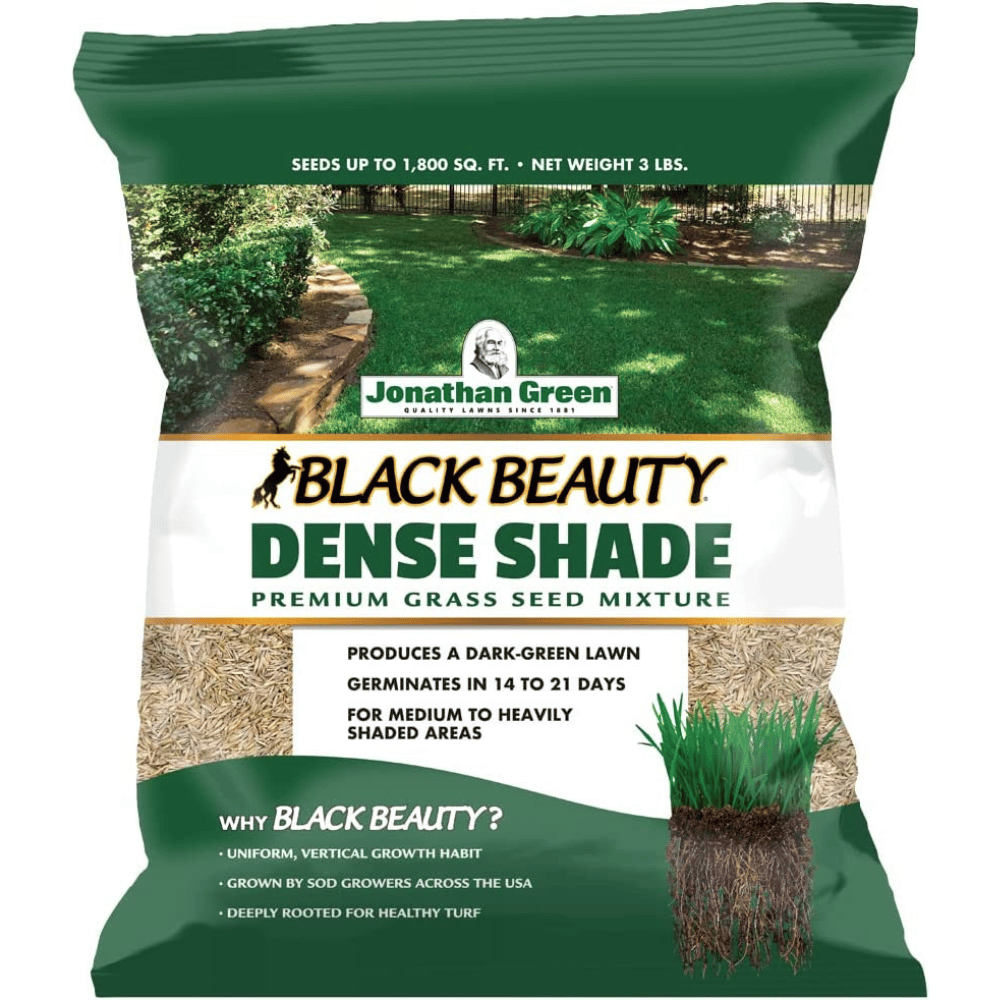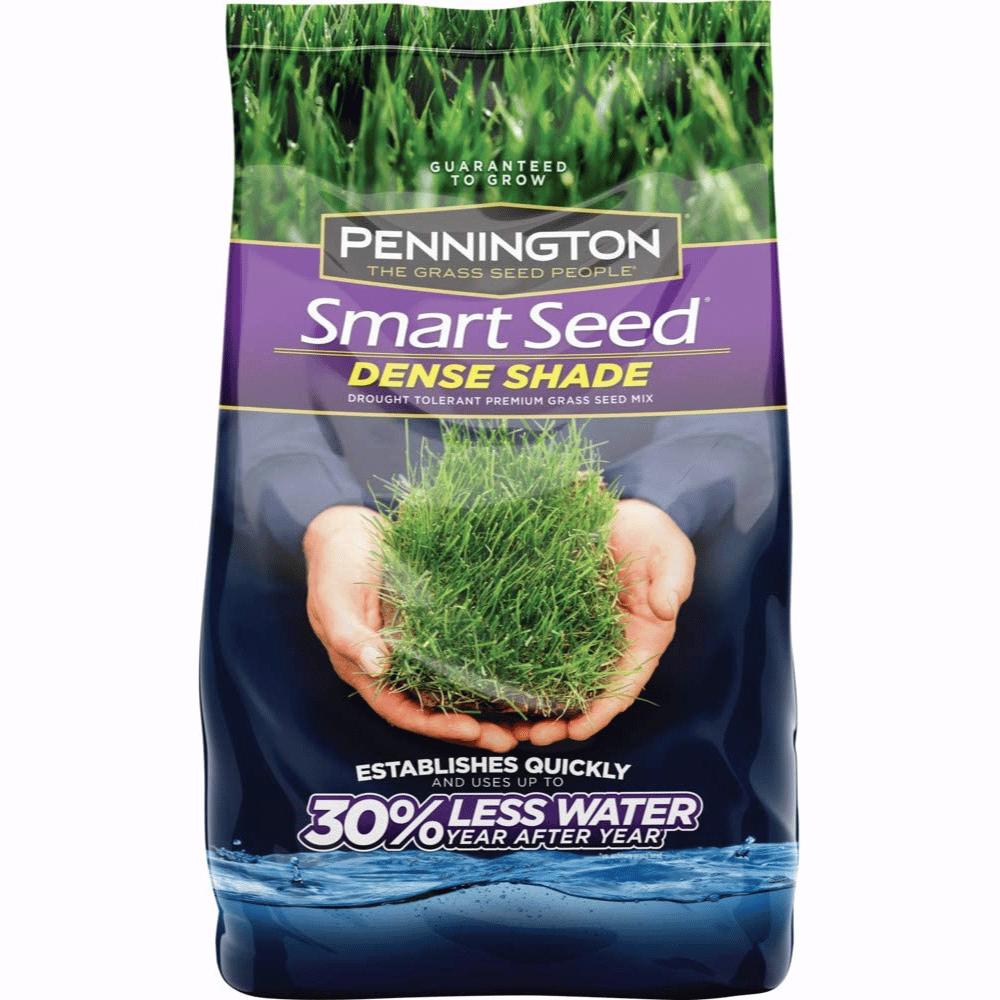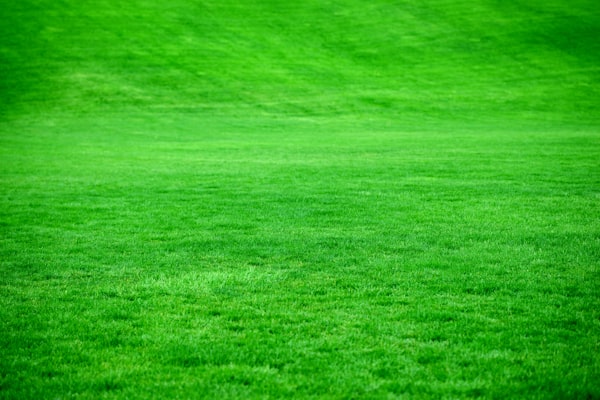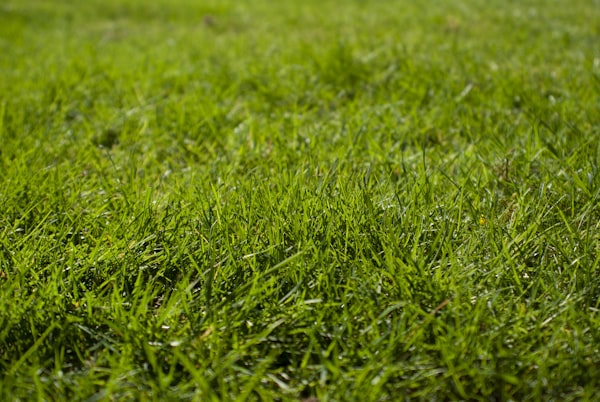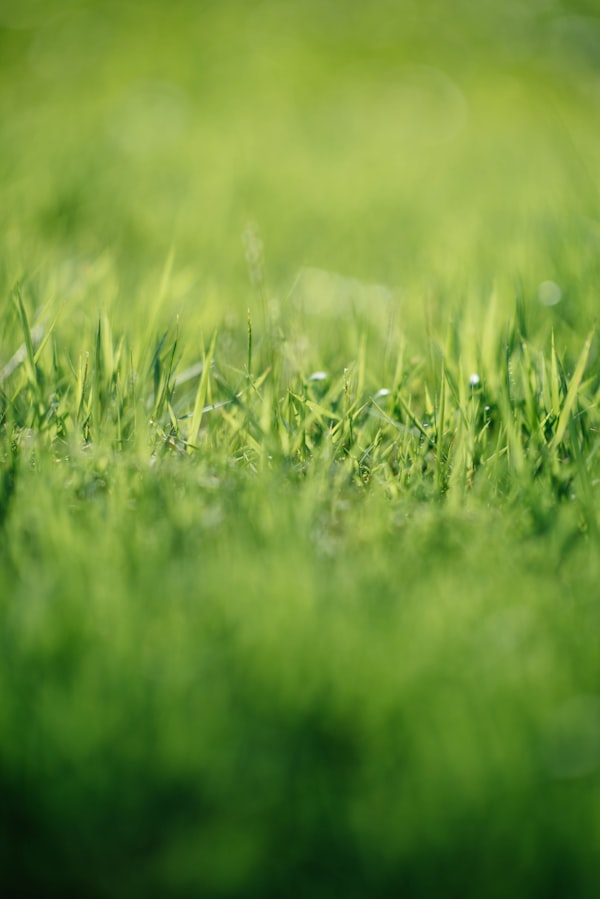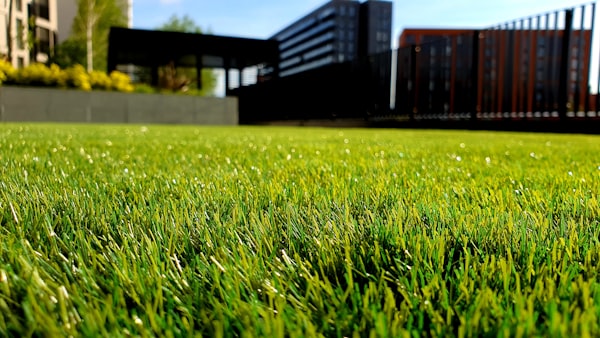Factors to Consider When Choosing Grass Seed for Shady Areas
When choosing the best grass seed for shady areas, there are several factors to consider:
Shade Tolerance
When selecting grass seed, look for shade-tolerant varieties. These types of grass are specially designed to grow in low-light conditions and can tolerate less sunlight than other types of grass.
Soil Type
The type of soil in your shady area can affect how well grass seed will grow. For example, if your soil is clay-like and heavy, it may hold more moisture, which can make it harder for grass to grow. On the other hand, if your soil is sandy, it may drain too quickly, which can also make it hard for grass to grow.
Grass Type
The type of grass you choose can also affect how well it grows in shady areas. Some grass types, such as fine fescue, are better suited for shady areas than others, like Bermuda grass.
Sun Exposure
While shady areas receive less sunlight, they may still receive some sunlight during certain parts of the day. Consider the amount of sun exposure your shady area receives when selecting grass seed. Some types of grass are better suited for partial shade, while others are better for full shade.
What grass seed grows best in shady areas?
Now that you know what factors to consider when choosing the best grass seed for shady areas, let's take a look at some of the best options:
Fine Fescue
Fine fescue is one of the most shade-tolerant grass types available. It grows well in partial shade and can even tolerate full shade. Fine fescue is also drought-resistant and requires less maintenance than other types of grass.
Kentucky Bluegrass
Kentucky bluegrass is a popular grass type that can tolerate partial shade. It's a durable and high-quality grass that is perfect for shady areas. However, it does require more maintenance than fine fescue.
Perennial Ryegrass
Perennial ryegrass is another good option for shady areas. It's a fast-growing grass that can establish quickly in low-light conditions. It's also a durable grass that can withstand heavy foot traffic.
Tips for Growing Grass in Shaded Areas
Now that you know which grass seed to choose, here are some tips for growing a healthy and lush lawn in shady areas:
1. Prepare the Soil
Before planting your grass seed, prepare the soil by removing any debris and aerating it. This will help the soil absorb more water and nutrients, which is essential for grass growth.
2. Choose the Right Fertilizer
When growing grass in shady areas, it's important to choose a fertilizer that is specifically designed for shade. These types of fertilizers are formulated to provide the right nutrients that are essential for grass growth in low-light conditions. Look for fertilizers that are high in nitrogen, as this nutrient is essential for promoting healthy grass growth. See our Picks for Best Fertilizers.
3. Water Properly
Proper watering is essential for growing grass in shady areas. Water your lawn deeply and infrequently, rather than watering it frequently but lightly. This will encourage the grass roots to grow deeper into the soil, which will help the grass better withstand drought conditions.
4. Mow at the Right Height
When mowing your lawn, be sure to adjust the mower blade to the right height. For shady areas, it's best to mow the grass at a slightly higher height than you would for sunny areas. This will help the grass blades capture more sunlight and promote healthy growth.
5. Control Weeds
Weeds can be especially problematic in shady areas, as they can compete with the grass for nutrients and water. To keep weeds under control, apply a pre-emergent herbicide before planting your grass seed, and use a post-emergent herbicide as needed.
How We Choose the Best Shade Tolerant Grass Seed
To help us choose the best products for you, we rely heavily on customer reviews. We scour the internet and read through countless reviews to get a sense of what people like and dislike about different products. We take the time to read both positive and negative reviews to get a comprehensive understanding of a product's strengths and weaknesses. By using customer reviews as our guide, we're able to make informed recommendations to our customers. We're confident that the products we recommend will meet your needs and exceed your expectations.
Jonathan Green Black Beauty
Jonathan Green Dense Shade Grass Seed is the perfect solution for growing lush, healthy grass in areas of high shade or low light. This 3 lb bag of seed provides enough coverage for up to 1000 square feet and contains a mix of varieties that are specially designed to thrive in shady conditions. The mixture includes a blend of fine-bladed fescue and perennial ryegrass that grow quickly, resist disease, and stay green even during periods of drought. With Jonathan Green's reputation for quality products, you can trust this seed to produce thick turf with minimal effort on your part.
Pennington Smart Seed
Pennington Smart Seed Dense Shade Grass Seed, 7 lb is a great choice for those looking to grow grass in shaded areas. Its formula includes a mix of seeds that are specially developed to thrive in less sunny spots and can handle up to 90% shade. The seed blend includes Ryegrass and Fescue varieties, which are known for their drought tolerance and ability to cope with low light conditions. This product also contains a proprietary blend of mulch, fertilizer and soil improvers designed to help the grass take root quickly and stay healthy. Additionally, Pennington promises that this seed will establish itself in as little as 14 days, making it an attractive option for homeowners wanting lush green grass fast.
GreenView Dense Shade Mixture
GreenView Fairway Formula Grass Seed Dense Shade Mixture is a great option for those looking for grass that grows in the shade. This mix of grass seed varieties contains both fine fescues and bluegrass, making it ideal for new grass. It is designed to provide superior resistance to heat, drought, insects, diseases, and heavy foot traffic. GreenView has all the components necessary to create lush, thick turf in difficult areas of your lawn where other types of grass won't grow. Plus, with its three pound size, you can cover up to 2,500 square feet of your yard with ease!
Outsidepride Shade Grass Seed Blend

Outsidepride Legacy Fine Fescue Shade Tolerant, Soft, Turf, Lawn Grass Seed Blend - 10 LBS
Outsidepride Grass Seed Blend is a great choice for those who want to grow grass in shaded areas. This seed blend includes four varieties of fine fescue grasses that are specifically chosen for their shade tolerance and ability to thrive in the toughest growing conditions. The blend contains hardy perennial rye, chewings fescue, creeping red fescue, and slender creeping red fescue which all combine together to create a beautiful and lush lawn. These grass varieties all require minimal care and maintenance while still providing a soft texture when walked on. This seed blend is perfect for shady yards or any area where full sun isn’t available as they can grow with as little as 4 hours of sunlight per day. With Outsidepride you can have an attractive lawn even in the most difficult growing conditions.
FAQs: Best Grass Seed for Shady Lawns
Are you struggling to grow a healthy and lush lawn in your shady yard? We've put together a list of frequently asked questions about the best grass seed for shady areas to help you make an informed decision.
How do I prepare the soil for planting grass seed in a shady area?
Before planting grass seed, it's important to prepare the soil by removing any debris and aerating it. This will help the soil absorb more water and nutrients, which is essential for grass growth.
How much sunlight do grass seeds need to grow in a shady area?
Grass seeds need at least 3-4 hours of sunlight per day to grow. In very shady areas, you can choose a grass that grows in shade and is specifically designed for low-light conditions.
How often should I water my lawn in a shady area?
In shady areas, it's important to water your lawn deeply and infrequently, rather than watering it frequently but lightly. This will encourage the grass roots to grow deeper into the soil, which will help the grass better withstand drought conditions.
How can I control weeds in a shady area?
To control weeds in shady areas, apply a pre-emergent herbicide before planting your grass seed, and use a post-emergent herbicide as needed. You can also manually remove weeds by hand, but be careful not to disturb the grass roots.
What fertilizer should I use for grass in a shady area?
Choose a fertilizer that is specifically designed for shade. These types of fertilizers are formulated to provide the right nutrients that are essential for grass growth in low-light conditions. Look for fertilizers that are high in nitrogen, as this nutrient is essential for promoting healthy grass growth.
Can I mix different types of grass seed for my shady lawn?
Yes, you can mix different types of grass seed for your shady lawn. Mixing different grass types can help improve the overall health and appearance of your lawn.
Should I do a Soil Test?
Yes, doing a soil test can be very helpful when trying to grow grass in a shady area. A soil test can provide valuable information about the pH level of the soil, as well as the levels of nutrients such as nitrogen, phosphorus, and potassium.
Knowing the pH level of your soil is particularly important because it can affect how well grass seed will grow. For example, if your soil is too acidic, it can make it harder for grass to absorb the nutrients it needs to grow. A soil test will help you determine the pH level of your soil and whether you need to add lime to adjust the pH level.
Additionally, a soil test can help you determine which nutrients your soil is lacking, and how much fertilizer you need to add to promote healthy grass growth. This can help you avoid over-fertilizing your lawn, which can be harmful to the environment and your grass.
How can I improve the soil quality in my shady area?
Improving soil quality in a shady area can be a bit of a challenge, but there are several things you can do to help promote healthy grass growth. Here are a few tips:
- Add organic matter to the soil: Organic matter, such as compost, leaf mold, and peat moss, can help improve the soil structure and provide important nutrients for grass growth. Spread a layer of organic matter over your soil and work it in with a rake or tiller.
- Use a soil conditioner: Soil conditioners, such as gypsum or lime, can help improve soil drainage and structure. These products can also help adjust the pH level of your soil, which can be important for grass growth.
- Aerate the soil: Aeration involves making small holes in the soil to allow air, water, and nutrients to penetrate more easily. Aeration can help improve soil drainage and promote healthy grass growth. You can use a manual or mechanical aerator, or hire a professional to do it for you.
- Mulch around trees: If you have trees in your shady area, consider mulching around them to help protect the soil and promote healthy tree growth. Use a layer of mulch that is about 2-3 inches thick and spread it in a circle around the base of the tree.
- Avoid compaction: Compacted soil can make it hard for grass roots to penetrate and absorb nutrients. To avoid soil compaction, try to avoid heavy foot traffic in your shady area and avoid parking heavy equipment or vehicles on your lawn.
How can I make my grass grow thicker in a shady area?
To make your grass grow thicker in a shady spot, be sure to choose a grass seed that is specifically designed for shade. Proper watering and fertilization are also essential for promoting healthy grass growth. Mowing your lawn at the right height can also help promote thicker growth.
Conclusion
Growing grass in shady areas may be challenging, but with the right grass seed and proper maintenance, you can still achieve a beautiful and healthy lawn. When choosing the best grass seed for your shady area, be sure to consider shade tolerance, soil type, grass type, and sun exposure. Fine fescue, Kentucky bluegrass, and perennial ryegrass are all great options for shady areas.
To grow a lush and healthy lawn, be sure to prepare the soil, choose the right fertilizer, water properly, mow at the right height, and control weeds. With these expert tips, you'll be on your way to growing a beautiful and healthy lawn, even in the shade.


